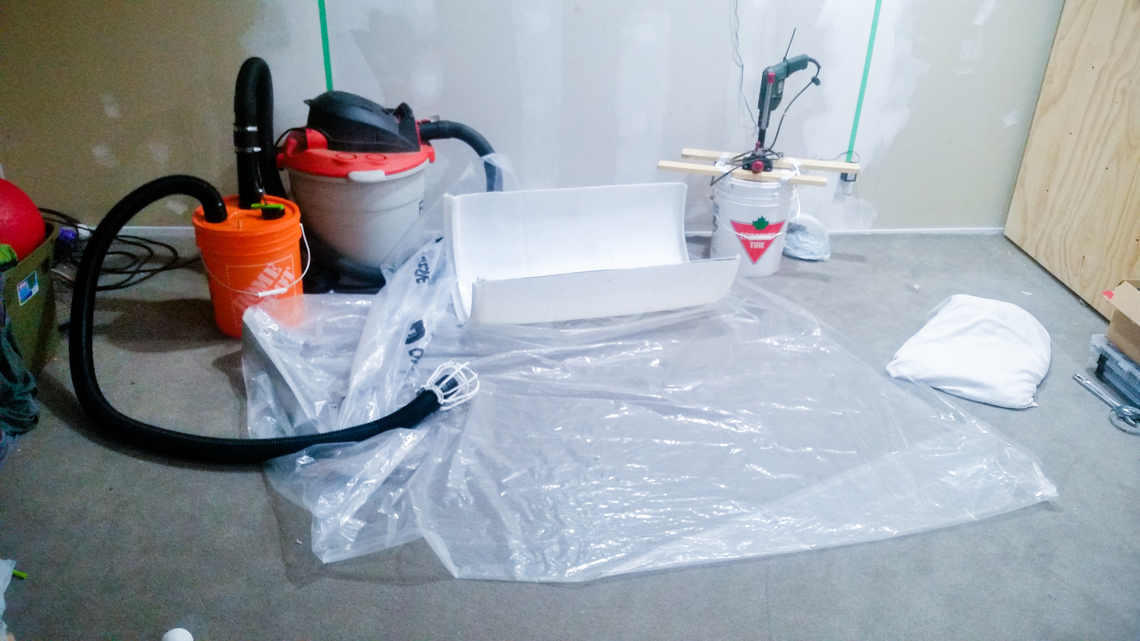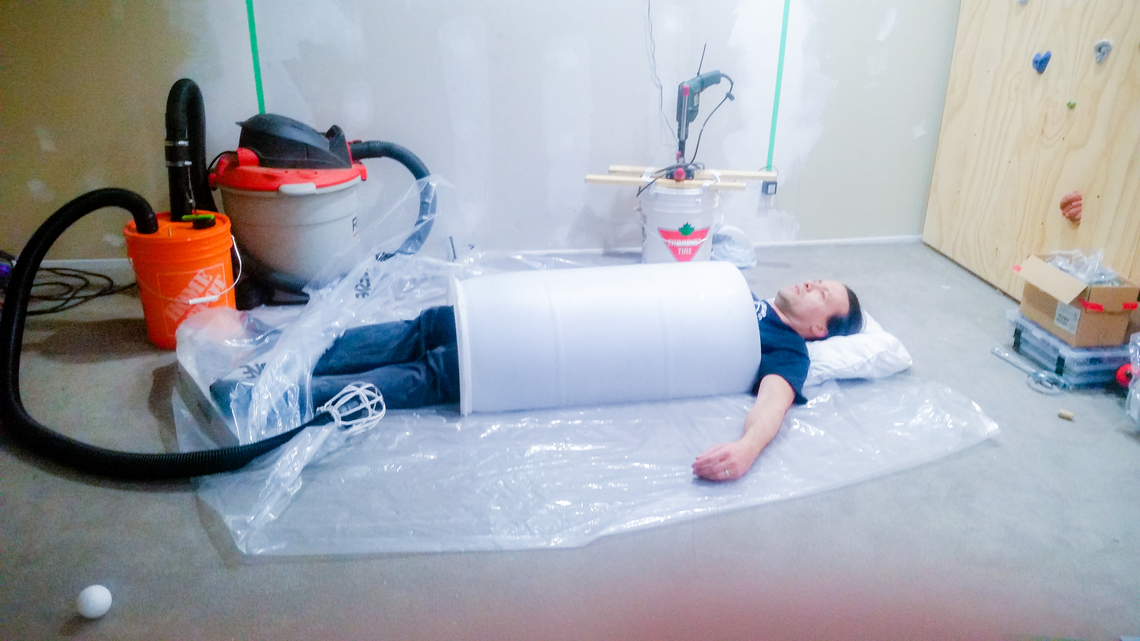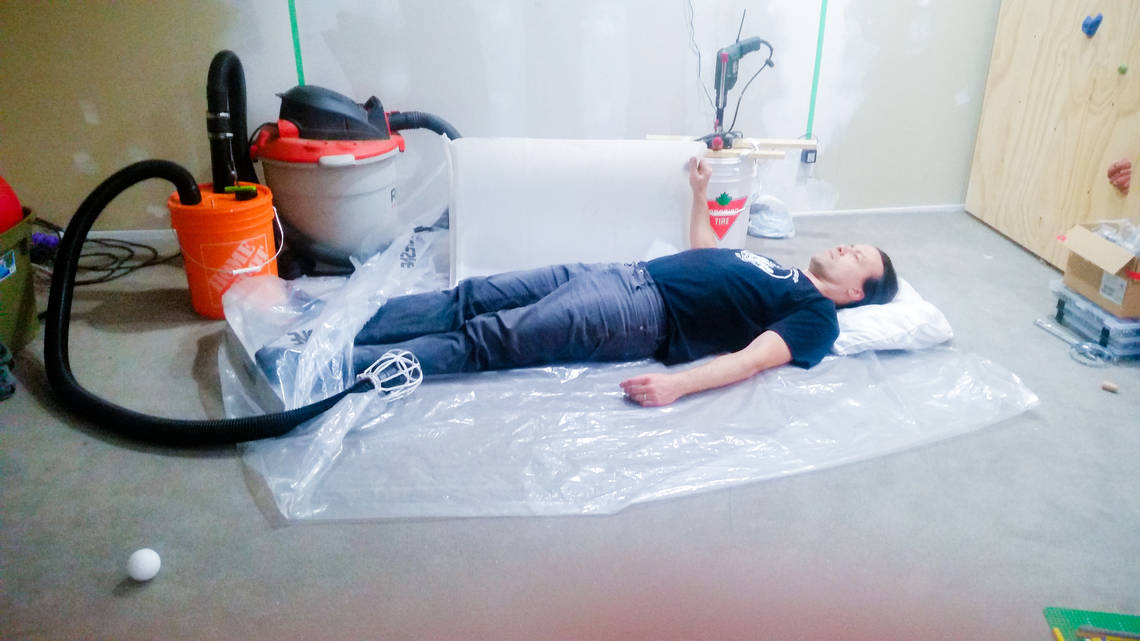Ventilator Chamber
Bearing in mind the potential need for rapid production, chamber design has focused on the chest arch, which could be fabricated from a variety of materials such as partial pipe sections, and the envelope, which could be rapidly formed from low-cost mattress bags, lay flat tubing, or polyethylene vapour barrier used in the construction industry.
For the chest arch, simple structural calculations were made to determine the parameters of the arch such that it will not collapse under pressure. As depicted in the Fig. 5, a 55-gallon drum sawed in half proved effective in our protype.
For the envelope, we have found that mattress bags with rolled edges and duct taped will seal adequately for this application, although mechanical closure with a stapler first may make the process easier and faster. An additional benefit is that to access the patient in an emergency, the jacket can be easily cut open, and subsequently repaired with tape or replaced as needed. Historically, jackets have been sealed at the collar or at a hood around the face; limbs can be entirely within the jacket or can penetrate the jacket with an adequate seal around them, as can tubing and monitoring equipment. We are considering aperture cup-style seals, which will be updated as more information is available.
Fig 5. Patient chamber prototype




